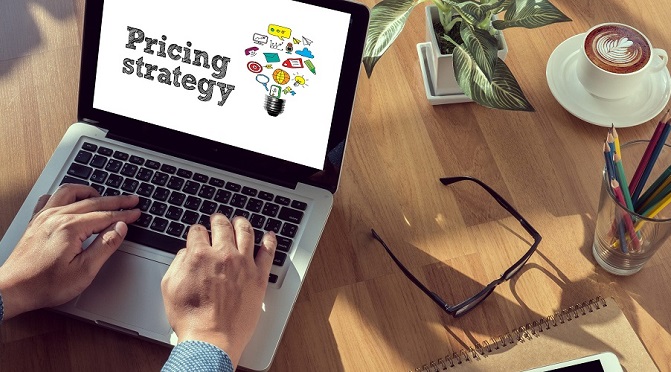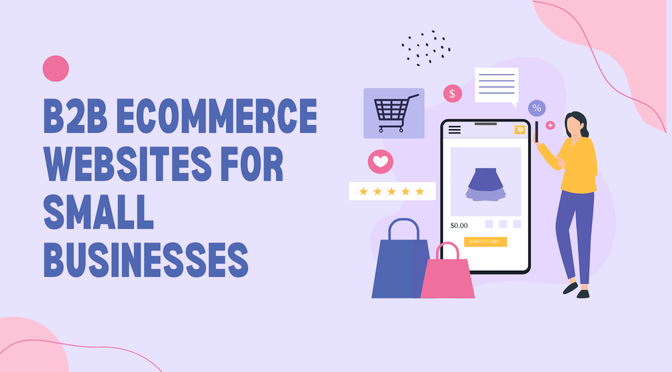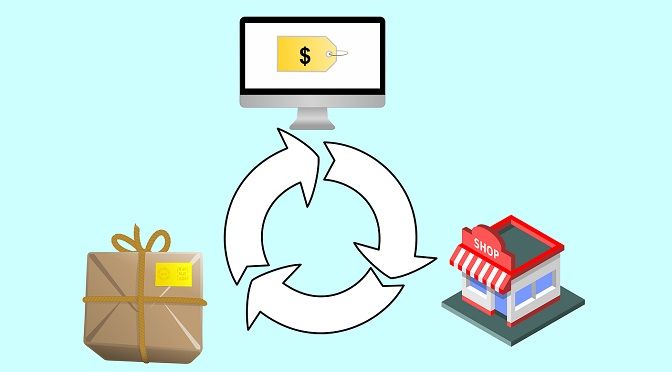E-commerce businesses are lagging behind from a price point aspect, a mammoth one at that, and seeing other online businesses and even physical stores take the lead.
Online purchases are all the rage, but you are failing for some reason and traditional stores are beating you to the punch. This blast from the past does not just come in waves, it seems.
Retail Dive, Forbes and Shopify are excellent contenders in swaying your business towards misguided hara-kiri. But remember, it is the price after all which determines customer interest:
All 61% of it as reflected in the PWC findings.
However, there are constructive and grounded pricing strategies out there which can help boost your e-commerce business.
Such as this:
It’s all good with visual aid but:
We need to make sense out of it. Keep reading to find out more about the top 5 pricing strategies for your eCommerce business.
1. Cost-based
The method here remains simple and straightforward. You assign a cost to the product which incorporates a profit margin. This technique is by no means simplistic yet it is not guaranteed to generate success.
Why? Because you left out market and customer research which we will get to shortly. Nonetheless, this strategy continues to be the most popular.
Let’s see why:
The electronics eCommerce business you are running mostly applies:
The Cost + profit route
It has served you well, perhaps not well enough because you are unaware or it failed on a recurring basis.
Exhibit A: Motorola Cliq 2 phone
Your phone here costs, with supplier and shipping combined, at around, hypothetically, $358. Alright now, there is some profit to be made here and hence you tag $100 as part of your profit margin.
And that’s all there is to it. Quick and easy profit.
Good enough? This feels like a sure-fire way of making it big.
Think again.
The future implications and risk of becoming obsolete in the business in the face of your own business strategy’s shortcomings and competitors’ presence…
…leave you exposed and vulnerable.
2. Market-based
You have thus far managed to keep this locomotive vehicle of internet domination moving forward.
The online market is filled with 1.61 billion consumer goods customers. While nobody is expecting you to cater to all of them, you should, however, tailor your niche for the market.
With the use of price tracking software such as Prisync, you can figure out where you stand on the totem pole. With the data available you can figure out where your prices stand, from the premium to the more cheaper end of the stick.
Expect to make changes to your cost and margins to remain afloat and begin charging ahead. Whether you increase or lower your prices, the end result should always attract more paying customers, market competitiveness and solid CRs throughout.
We will look into the camera body products #1 and #4. Here, #1 is understandably the most eye-catching due to its comparatively affordable price. But how long can it expect to survive in the business when it’s bleeding dry?
Retailer #4 sells the body at a pretty hefty price at $1944. With some logical alterations, retailer #1 can just raise the price to $1865. This way the margin sees an uptick and the business becomes noticeably hungry & competitive.
3. Consumer-based
Understand the values you, your customers and the niche hold dear to your heart. Address the USP and run your business accordingly.
The buyers for a 2017 Audi S3 Sportback and 2016 Honda Civic Type R are different, yes?
Applying the tools mentioned above and with some knowledge of the conditions, you can cater to the deal hunter base of your customers by putting up offers, discounts and competitive prices for the Civic Type R.
On the other hand, the value based groups out there seeking luxury items such as the Audi S3 will not be fazed by competitive prices. They are here to buy, anyway. Therefore, do not highlight the offers, discounts and ultimately pricing as key parts of the value proposition.
Regardless of the niche, the discipline remains the same.
4. Dynamic pricing based
This one here is not an extension of what was discussed prior but something which needs its own entry in this article. We talked about pricing tools earlier. It only works best when all avenues are functioning.
Simply getting data about competitor prices will not bring about the results you seek.
Not really:
You can definitely change prices to remain competitive, but it only works when your consumer research, cost-based data, profit margin target and market studies are all feeding off of one another to then set a competitive price based on existing competition.
Once again, the all-encompassing rules and guidelines for streamlined repricing can be carried out by tools such as Prisync.
5. Psychology-based
Time to bring some science into it. Forbes’ Roger Dooley explains how Neuroscience advances e-commerce revenue.
Do not be alarmed for this merely touches upon some easy tweaks and changes and…
…voila!
Your eCommerce site has struck gold!
- 9s have proven to be far more attractive than 0s.
A $12.99 brooch can definitely sell more at your site than your competition’s $13.00 price tag - Syllables are king. The fewer they are the more they sell. Pronunciation and the time it takes effect your revenue.
Be sure to have more of $43.10s than $43.67s.
Forty-three-ten beats forty-three-sixty-seven on any given day. - Size matters! Font size could be like:
Gravity pulling you into your e-commerce grave or
Rocket boosters propelling you upwards to e-commerce heaven.
Studies have shown products with price tags with a smaller font size sell more than those with bigger font size.
Conclusion
Who knew there would be so much to just setting a price, right?
You know your niche and think that’s enough? No.
The consumer data is on your desk and you wish to move ahead with confidence? Not good enough.
Okay, but the market research has come out, pricing tools are favourable and the competition looks like it might as well be easy pickings. Can you go for the kill? Too soon.
Alright, the consumer psychology data has been worked into all that in the most dynamic of ways. How about now?
The truth is, these 5 tips working closely and in collaboration are the essential tools to boost your e-commerce revenue simply from a price point.
Several other aspects of the internet business should be focused on, of course. None can function to the premium state unless you engage actively – in all departments.
Total involvement, awareness and a thirst for optimization can take you there.







